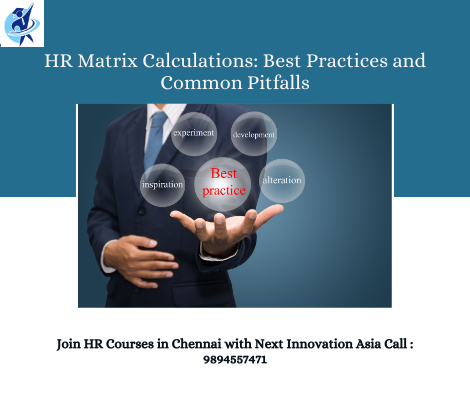In the ever-evolving landscape of human resources, HR matrix calculations have become an indispensable tool for data-driven decision-making. When executed correctly, they provide invaluable insights into workforce dynamics, performance, and overall organizational health. However, navigating the complexities of HR matrices can be challenging. This article delves into best practices and common pitfalls to help HR professionals harness the full potential of matrix calculations.
Best Practices for HR Matrix Calculations
- Define Clear Objectives: Before diving into data collection and analysis, it’s crucial to establish clear objectives. What specific insights do you seek? Whether it’s identifying skill gaps, predicting turnover, or optimizing workforce allocation, having defined goals will guide your matrix calculations effectively.
- Ensure Data Accuracy: The accuracy of your HR matrices hinges on the quality of your data. Regularly update and cleanse your data to avoid inaccuracies. Implementing robust data validation processes ensures that the insights derived are reliable and actionable.
- Select Relevant Metrics: Focus on metrics that align with your objectives. Common HR metrics include employee turnover rates, time-to-hire, training effectiveness, and performance scores. Tailor your matrix to incorporate metrics that provide the most value to your organization.
- Leverage Technology: Utilize HR analytics software and tools to streamline matrix calculations. These platforms offer advanced capabilities for data visualization, trend analysis, and predictive modeling, enabling more efficient and accurate analyses.
- Involve Stakeholders: Engage relevant stakeholders, including HR teams, managers, and employees, in the process. Their input can provide valuable context and enhance the accuracy of your matrix calculations. Additionally, involving stakeholders fosters buy-in and ensures that insights are acted upon.
- Regularly Review and Adjust: HR matrices should not be static. Regularly review and adjust your calculations to reflect changing organizational needs and external factors. Continuous monitoring and refinement ensure that your matrices remain relevant and impactful.
Common Pitfalls in HR Matrix Calculations
- Overcomplicating the Matrix: While it may be tempting to include numerous metrics, overcomplicating your matrix can lead to confusion and analysis paralysis. Focus on a manageable number of key metrics that provide the most significant insights.
- Ignoring Contextual Factors: Data without context can be misleading. Consider external factors such as industry trends, economic conditions, and organizational changes when interpreting your matrix results. Ignoring these factors can lead to incorrect conclusions and ineffective strategies.
- Relying Solely on Historical Data: While historical data is valuable, relying solely on past trends can limit your perspective. Incorporate predictive analytics to forecast future trends and scenarios, enabling proactive decision-making.
- Neglecting Data Privacy and Security: Handling sensitive employee data requires strict adherence to data privacy and security protocols. Ensure compliance with relevant regulations and implement robust security measures to protect employee information.
- Failing to Act on Insights: The ultimate goal of HR matrix calculations is to drive actionable insights. Failing to translate insights into concrete actions and strategies negates the value of your analyses. Develop a clear action plan and follow through on the recommendations derived from your matrices.
Conclusion
HR matrix calculations are a powerful tool for transforming raw data into actionable insights. By adhering to best practices and avoiding common pitfalls, HR professionals can leverage matrices to enhance decision-making, optimize workforce management, and drive organizational success. With clear objectives, accurate data, relevant metrics, and stakeholder involvement, HR matrices can become a cornerstone of your HR strategy, providing the insights needed to navigate the complexities of the modern workplace.
Achieve HR excellence at Next Innovation Asia, Chennai’s foremost HR Training Institute. Essential skills, certified training, and job support await. Join us!

